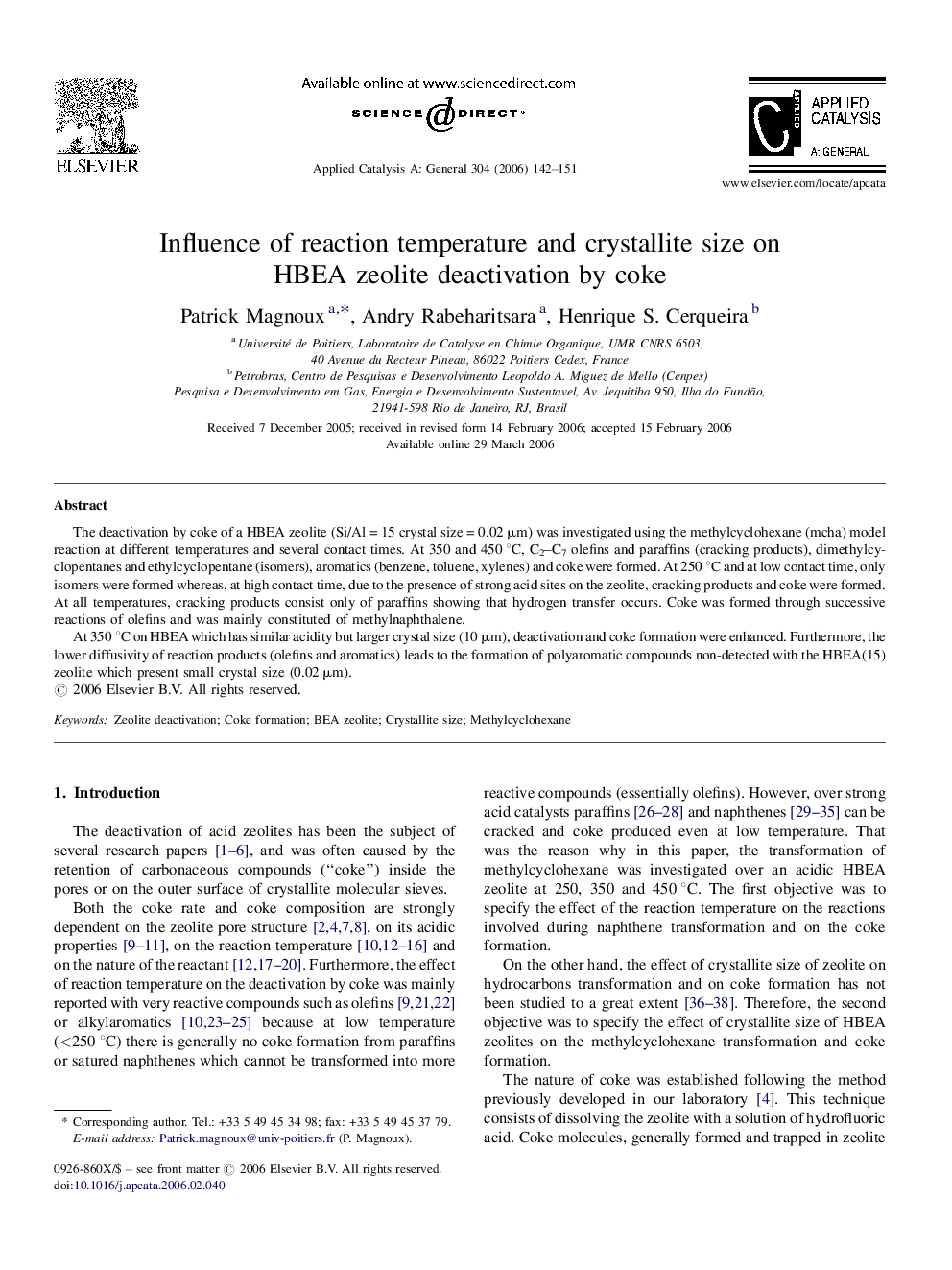| Article ID | Journal | Published Year | Pages | File Type |
|---|---|---|---|---|
| 44497 | Applied Catalysis A: General | 2006 | 10 Pages |
The deactivation by coke of a HBEA zeolite (Si/Al = 15 crystal size = 0.02 μm) was investigated using the methylcyclohexane (mcha) model reaction at different temperatures and several contact times. At 350 and 450 °C, C2–C7 olefins and paraffins (cracking products), dimethylcyclopentanes and ethylcyclopentane (isomers), aromatics (benzene, toluene, xylenes) and coke were formed. At 250 °C and at low contact time, only isomers were formed whereas, at high contact time, due to the presence of strong acid sites on the zeolite, cracking products and coke were formed. At all temperatures, cracking products consist only of paraffins showing that hydrogen transfer occurs. Coke was formed through successive reactions of olefins and was mainly constituted of methylnaphthalene.At 350 °C on HBEA which has similar acidity but larger crystal size (10 μm), deactivation and coke formation were enhanced. Furthermore, the lower diffusivity of reaction products (olefins and aromatics) leads to the formation of polyaromatic compounds non-detected with the HBEA(15) zeolite which present small crystal size (0.02 μm).
